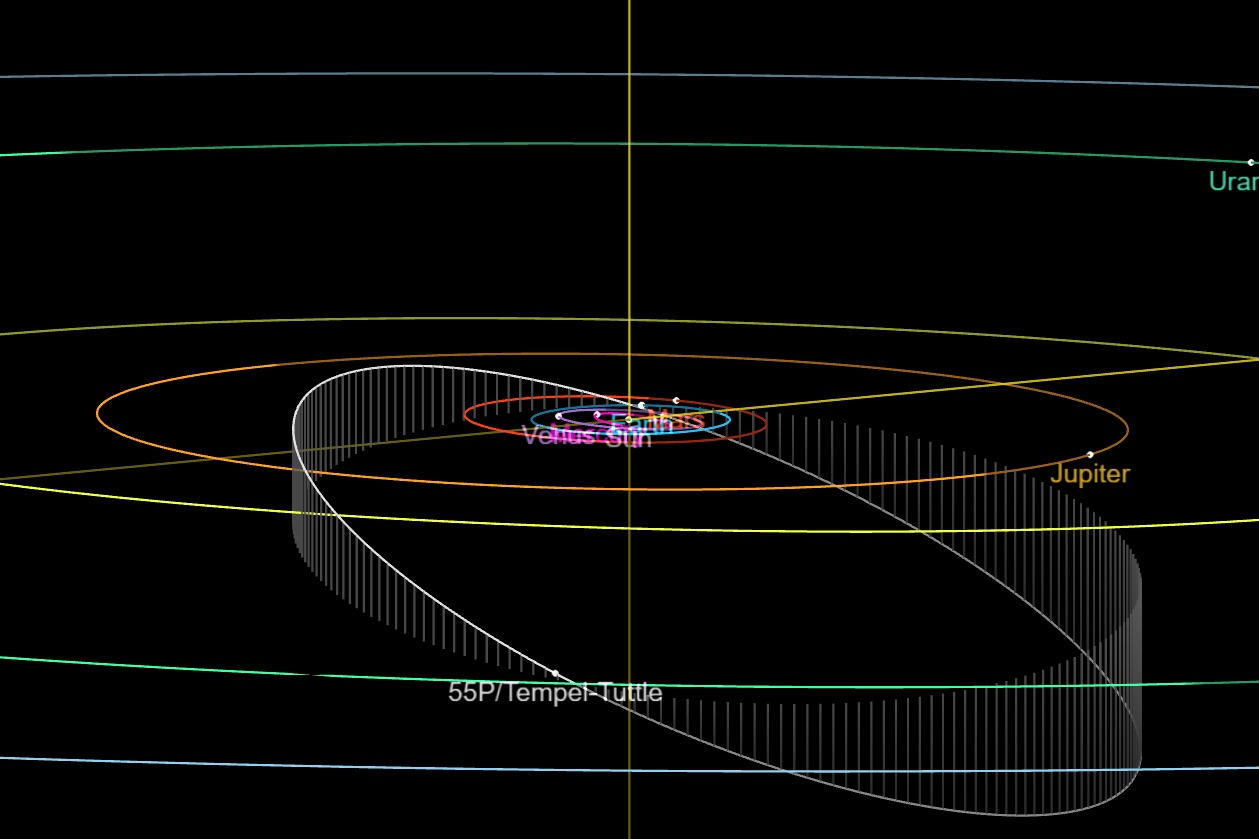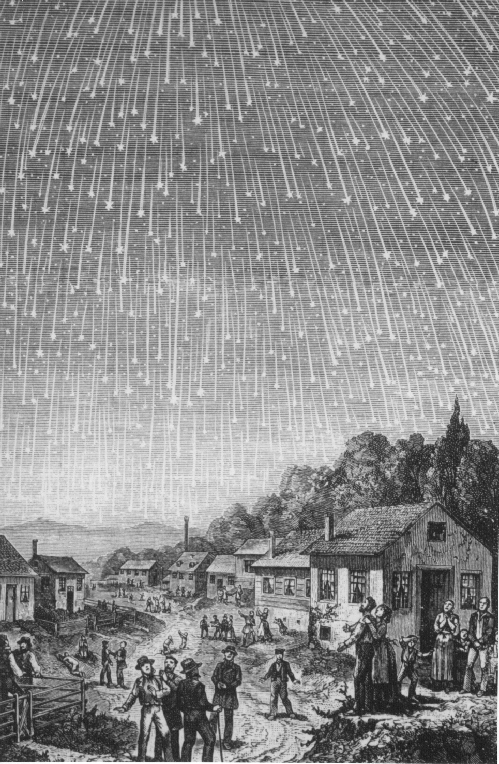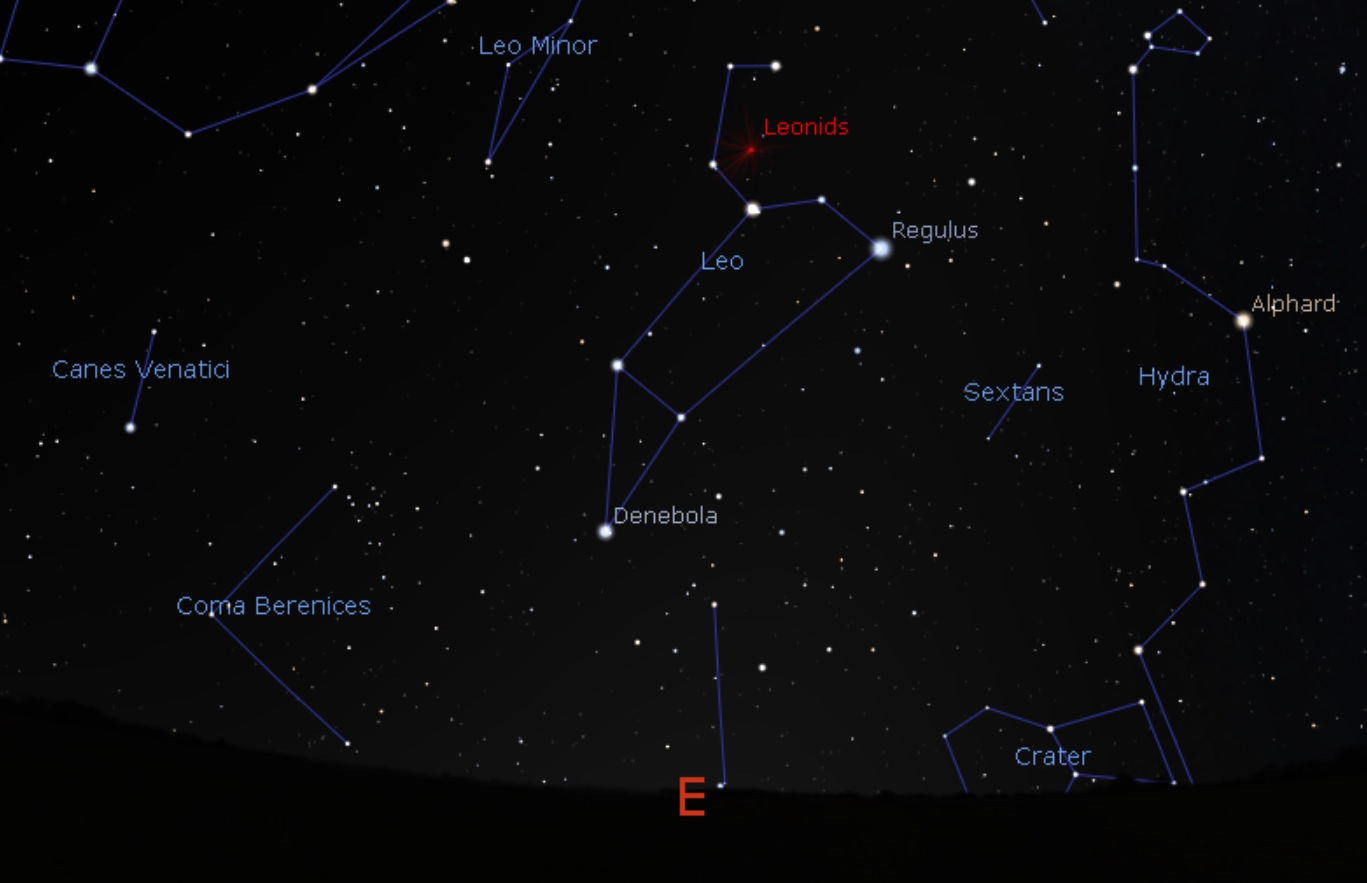The Leonid Meteor Bathe Peaks on Monday Evening, This is What to Anticipate
We witnessed a tremendous astronomical spectacle within the early morning skies over the Kuwaiti desert in November 1998. That 12 months, the Leonid meteors placed on a spectacular show, topping an estimated 1,00zero meteors per hour close to dawn.
On most years, nevertheless, the Lion whimpers with just a few paltry meteors per hour, however as soon as each 33 years or so, the mighty Leonids can roar with a tremendous show reaching storm degree proportions.
Prospects for the 2020 Leonids
Sadly, 2020 will not be projected to be such a 12 months, but it surely’s all the time value holding a watch out throughout the early morning hours in mid-November. The 2020 peak for the Leonids is predicted to reach on Tuesday, November 17th, at round ~four:00 Common Time (UT) or 11:00 PM EST (on the 16th).
The Moon is a waxing crescent simply two days after new at this level, preferrred for meteor watching. This additionally favors the longitude of Europe and Africa at daybreak, one other plus. The 2020 Zenithal Hourly Charge (ZHR) is predicted to hit a average 15-20 meteors per hour.
The supply of the Leonid meteors is periodic comet 55P/Tempel-Tuttle, which is on a 33-year orbit across the Solar. The subsequent main peak for the Leonids is predicted for the early 2030s round 2032-33, although circumstances this time round could show to be lower than favorable.
 The orbit of Comet 55P/Tempel-Tuttle. (NASA/JPL)
The orbit of Comet 55P/Tempel-Tuttle. (NASA/JPL)
It is value noting that within the late 1990s we have been seeing enhanced charges over a number of years main as much as 1998, so what we see from the Leonids within the coming decade could also be indicative of what we may be in for, come 2032.
The Leonids are one of many most infamous of meteor storm producers. On the morning of 13 November 1833, residents of the US Jap Seaboard awoke to a very terrifying sight, because the sky gave the impression to be awash with meteors, failing like rain.
 1889 depiction of the 1833 Leonids, based mostly on a first-hand account. (Adolf Vollmy/Public Area)
1889 depiction of the 1833 Leonids, based mostly on a first-hand account. (Adolf Vollmy/Public Area)
Be mindful, nobody actually knew what meteors really have been till the late 19th century, or how they have been associated to the mud trails laid down by comets. Actually, the 1833 Leonids are cited as contributing to most of the spiritual fundamentalist revivals of the 1830s within the US… they have been that influential.
Will the Leonids ‘ramp up’ within the coming decade? Be mindful, the quoted zenithal hourly price (ZHR) for a given bathe is the quantity you’ll see with optimum situations, below a darkish, moonless sky with the radiant instantly overhead… most of us will see significantly much less.
Many neophyte observers get excited concerning the hype main as much as a meteor bathe, solely to be annoyed by the fact of seeing few if any meteors below light-polluted skies.
Be affected person, and get your hands on a great darkish sky web site for finest outcomes. Tracing a meteor path again to the ‘Sickle of Leo’ asterism identifies its membership as a Leonid… in any other case, the meteor could also be a background sporadic, or a member of one other bathe.
 Its meteor trails seems to originate from the Leo constellation. (Stellarium)
Its meteor trails seems to originate from the Leo constellation. (Stellarium)
In November, the Taurids are additionally lively, and the December Geminids are additionally spooling up. For finest outcomes, watch within the early morning hours, when the Earth is assembly the Leonid meteor stream head-on.
In recent times, the Leonids have produced an noticed peak of 29 (2019), 24 (2018) and 20 (2017) meteors per hour.
Observing a meteor bathe is so simple as bundling up, laying again, watching and ready. We choose to look about 45 levels off to 1 facet of the radiant for a bathe to see meteors in profile, although actually, they’ll seem wherever within the sky.
When you’re observing with a good friend, you’ll want to observe in reverse instructions, to double your sky protection. Additionally, you’ll want to preserve a set of binoculars helpful, as a superb fireball can usually depart a lingering smoke prepare that may stay seen for over a minute or so.
You can even ‘hear’ meteors, or extra precisely, the ionized reflection crackling of their wake alongside vacant swaths of the FM radio dial. You hear the same phenomenon alongside the FM band throughout an intense lightning storm. Very often, the radio reflections off of a meteor passage would possibly even briefly convey a distant radio station into focus.
However are you able to really hear meteors? It is a true and chronic phenomenon reported over time by observers… as a child, I bear in mind listening to a definite ‘hiss’ accompanying a superb Perseid.
Now, meteors are simply mud grains burning up excessive within the ambiance, removed from the bottom and unable to hold sound to the viewer… plus, in contrast to the clap of thunder you hear a number of seconds after you see a flash of lightning, the impact appears to be instantaneous.
The wrongdoer seems to be what’s generally known as electrophonic sound, an area present induction arrange off of close by phone wires, aluminum siding and even damp dewy grass surrounding the observer throughout the passage of a meteor.
Imaging meteors can be a simple affair: a tripod-mounted DSLR digicam with a wide-lens overlaying a great swath of sky will do the trick. Use the handbook ‘bulb’ setting to take a collection of 1-Three minute exposures, and see what turns up.
You’ll want to take a collection of take a look at exposures first, to get the steadiness of shutter velocity/f-ratio/and ISO publicity excellent versus the native sky situations. You’ll want to rigorously look at the photographs afterwards… almost each meteor we have caught on digicam was missed throughout bare eye observing.
I like to make use of a distant intervalometer to automate the method by setting the digicam to file a collection of Three-minute exposures, liberating me as much as merely sit again and watch the present. Additionally, preserve an additional set of digicam batteries helpful, ideally in a heat pocket; lengthy exposures and chilly November temperatures can drain digicam batteries in a rush.
Lastly, remember to maintain a rely of what number of meteors you see, and report your observations to the Worldwide Meteor Group. Newbie visible and radio observations of meteor showers all contribute to our efforts to know how specific meteor showers evolve, and will even uncover new meteor streams.
Certain, the sky will not come ablaze with a Leonid meteor storm in 2020, but it surely’s all the time value awaiting the stray streaks from the Sickle this coming week, and marveling at what could be.
This text was initially printed by Universe Right this moment. Learn the unique article.